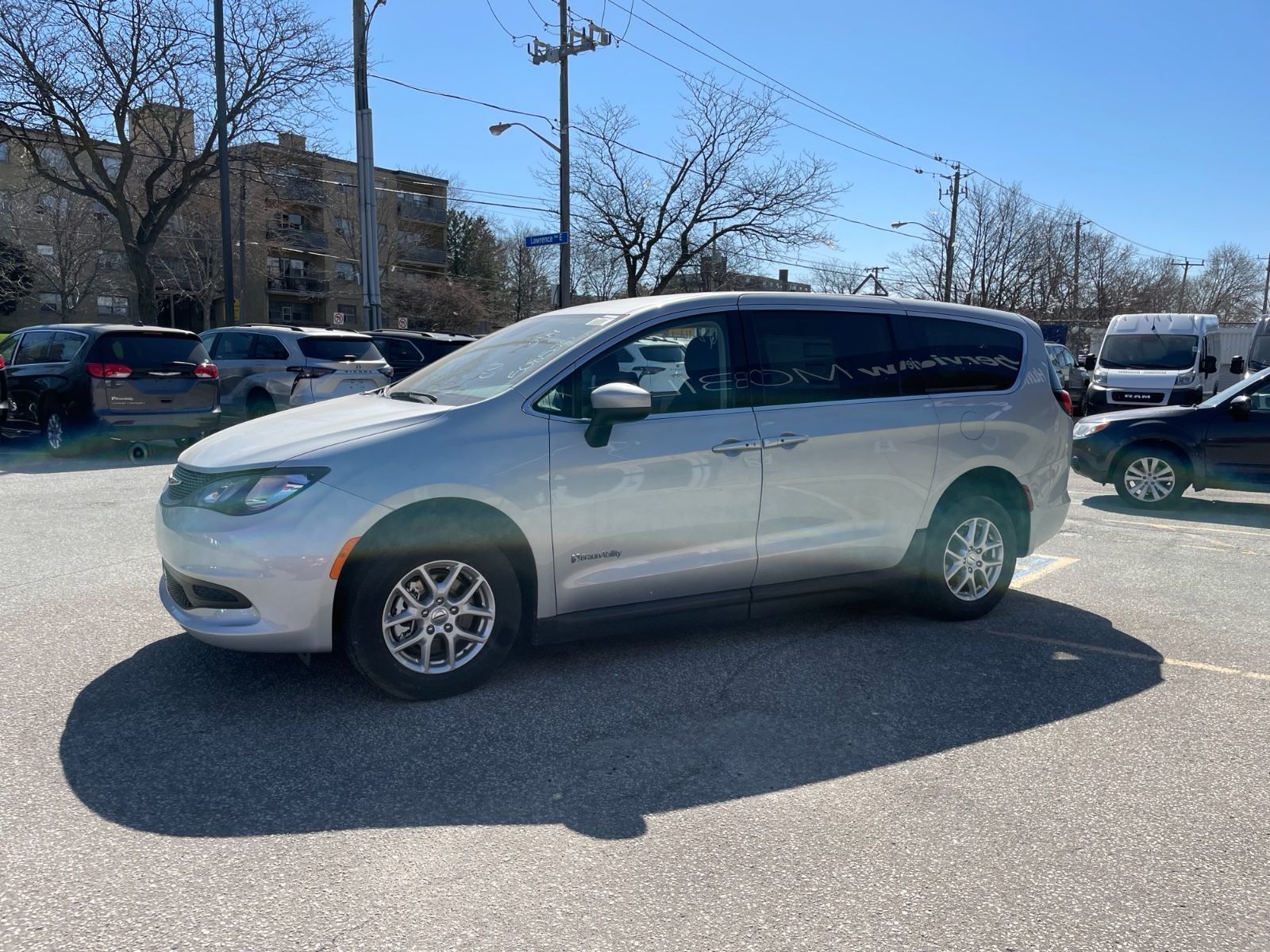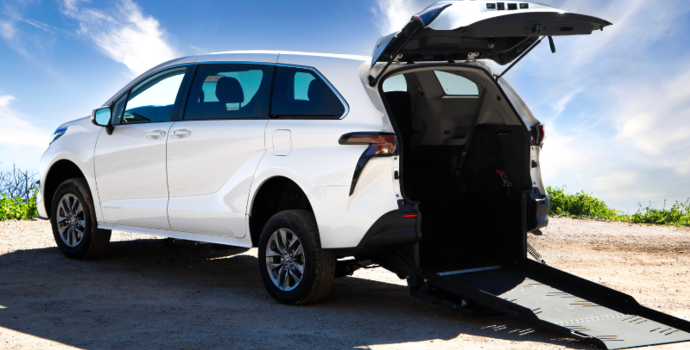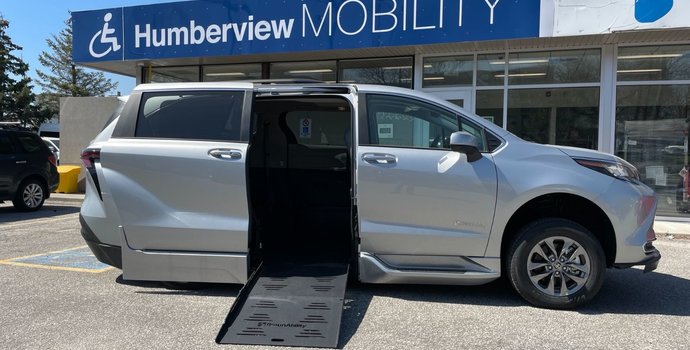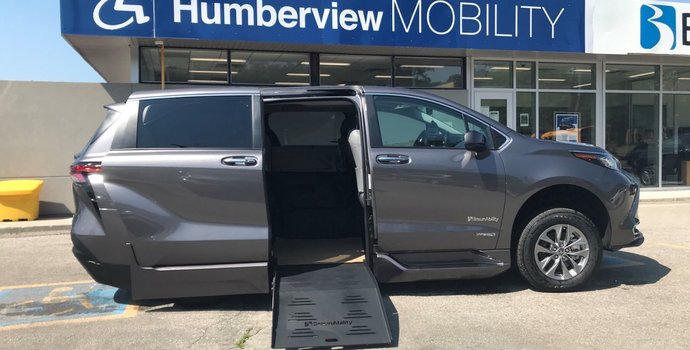Choosing between side-entry and rear-entry wheelchair vans affects daily travel across Ontario's mix of urban centres and suburban communities. Each design offers distinct advantages depending on parking situations, driving needs, and accessibility requirements.
Understanding how these configurations work in real Ontario environments helps wheelchair users and their families make informed decisions. From Toronto's busy streets to smaller community parking lots, the entry style impacts both convenience and independence.
How Side-Entry and Rear-Entry Systems Work
Side-entry vans deploy their ramp from the side door, typically on the curbside. The ramp extends horizontally from the vehicle, requiring additional space alongside the van for wheelchair access. Most conversions allow the wheelchair user to reach the front passenger seat or even the driver's position.
Rear-entry vans lower their ramp from the back hatch area. The ramp extends behind the vehicle into the driving lane or available space. This design usually positions wheelchair users in the mid or rear sections of the van, with limited access to front seating areas.
Both systems include safety features like non-slip surfaces and secured tie-down points. The main difference lies in where space is needed for ramp deployment and where passengers can sit within the vehicle.
Talk to Our Mobility Specialist
Have Questions? Connect with Our Mobility Specialist Today for Personalized Assistance and Expert Guidance!
Contact Now
Parking Requirements Across Ontario
Side-Entry Space Needs
Side-entry vans work best with designated accessible parking spaces that include the striped areas beside regular spots. These wider spaces accommodate the ramp's horizontal deployment. Ontario's accessibility standards require these spaces in public parking areas, making side-entry vans practical for shopping centres, medical facilities, and government buildings.
Rear-Entry Flexibility
Rear-entry vans can use standard parking spaces since they only need clearance behind the vehicle. This advantage helps in older parking lots without accessible spaces, residential driveways, and tight urban areas where side space is limited.
Ontario Urban vs. Suburban Considerations
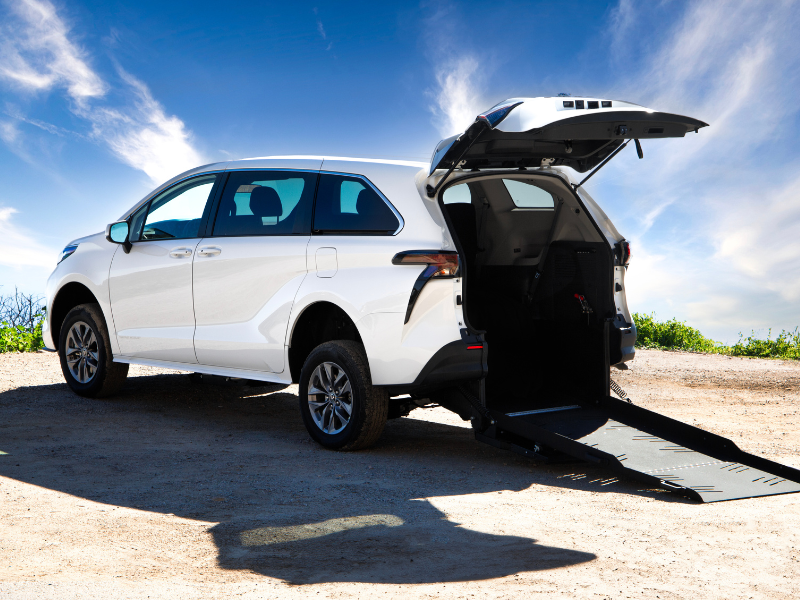
City Driving and Street Parking
Toronto, Ottawa, Hamilton, and other Ontario cities offer curbside accessibility advantages for side-entry vans. The ramp deploys onto the sidewalk rather than into traffic, providing safer loading and unloading. This design works well for parallel parking along city streets.
Rear-entry vans face challenges with street parking since the ramp extends into the roadway. This creates safety concerns and may violate municipal parking bylaws in some Ontario communities.
Suburban and Rural Access
Many Ontario suburbs feature single-car driveways and standard garage sizes that favour rear-entry designs. These vans can load and unload in narrow residential settings where side clearance is minimal.
Side-entry vans may struggle in suburban driveways unless additional space exists alongside the vehicle. However, they excel in suburban shopping plazas and community centres with proper accessible parking.
Driving and Seating Flexibility
Side-entry conversions allow wheelchair users to access the driver's seat or front passenger position. This capability supports independent driving and provides better visibility for passengers who prefer front seating.
Rear-entry designs typically restrict wheelchair users to mid or rear positions within the vehicle. While this limits driving opportunities, it often provides more space for multiple wheelchairs or additional passengers in standard seats.
The choice between driving independence and passenger capacity depends on individual needs and family situations.
Cost and Conversion Considerations
|
Factor
|
Side-Entry Vans
|
Rear-Entry Vans
|
|
Initial Cost
|
Higher due to complex conversion
|
Lower, simpler modifications
|
|
Space Requirements
|
Need wide parking or accessible spots
|
Work with standard parking
|
|
Driving Access
|
Full driver and front passenger access
|
Limited to mid/rear positioning
|
|
Multiple Wheelchairs
|
Usually accommodate one wheelchair
|
Often designed for multiple users
|
|
Maintenance
|
More complex mechanisms
|
Simpler ramp systems
|
Weather and Seasonal Factors
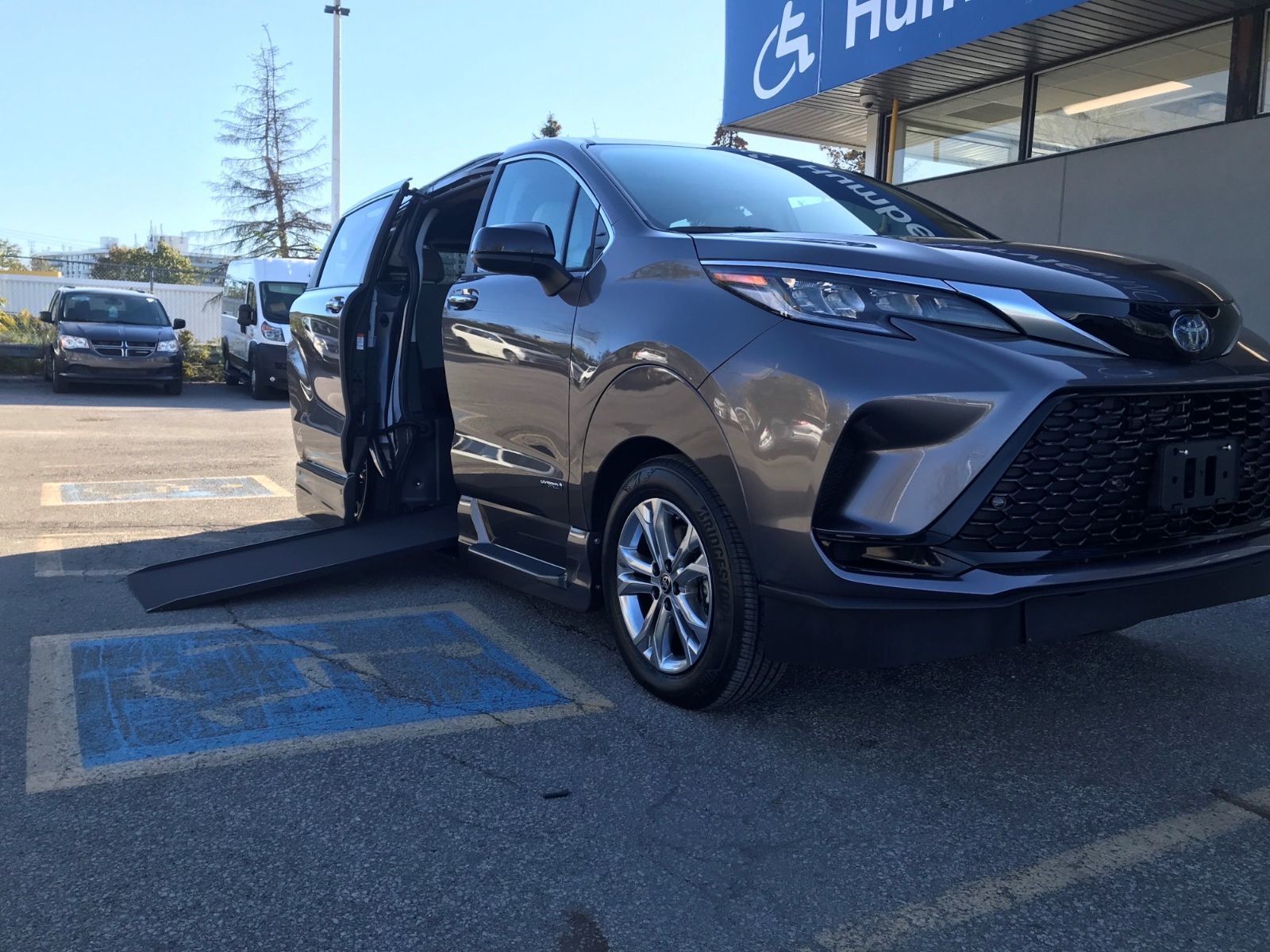
Ontario's winter conditions affect both van types differently. Side-entry ramps may collect snow and ice when parked against snow banks common in winter parking situations. The horizontal deployment can be hindered by accumulated snow alongside the vehicle.
Rear-entry ramps face similar winter challenges but may be easier to clear since the area behind the vehicle is often more accessible for snow removal. However, icy conditions in the deployment area require careful attention for both designs.
Summer accessibility is generally consistent for both types, though side-entry vans may offer better shade protection during loading in sunny conditions.
Making the Right Choice for Your Situation
Consider side-entry vans if the wheelchair user plans to drive or requires front seating access. These designs work well for families who primarily use accessible parking and travel to urban areas with proper infrastructure.
Choose rear-entry vans if parking flexibility matters more than front seating access. This option suits users who need to load from home driveways, tight parking lots, or areas without dedicated accessible spaces.
Both designs provide safe, reliable transportation when properly maintained and operated according to manufacturer guidelines.
For Ontario residents exploring wheelchair van options, Humberview Mobility offers both side-entry and rear-entry solutions with personalized consultations to match your specific accessibility needs and driving patterns.


